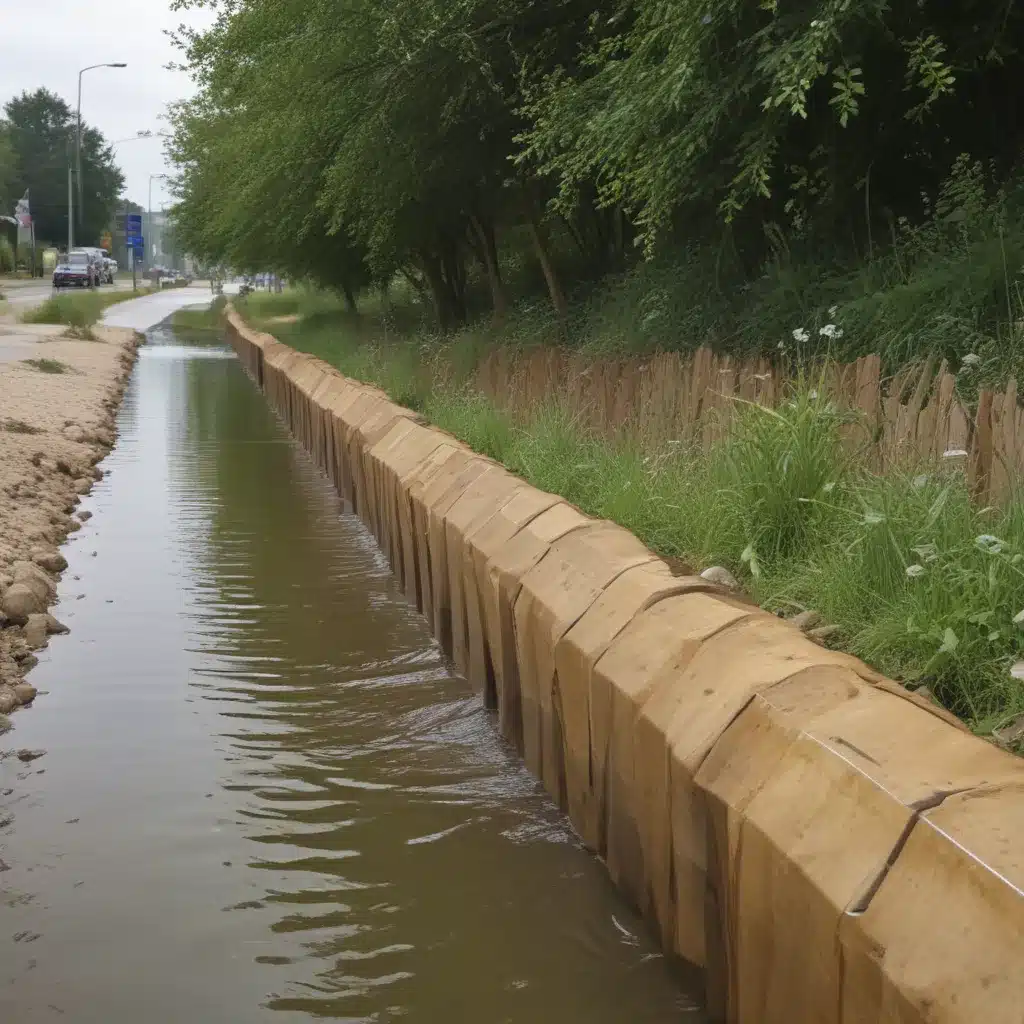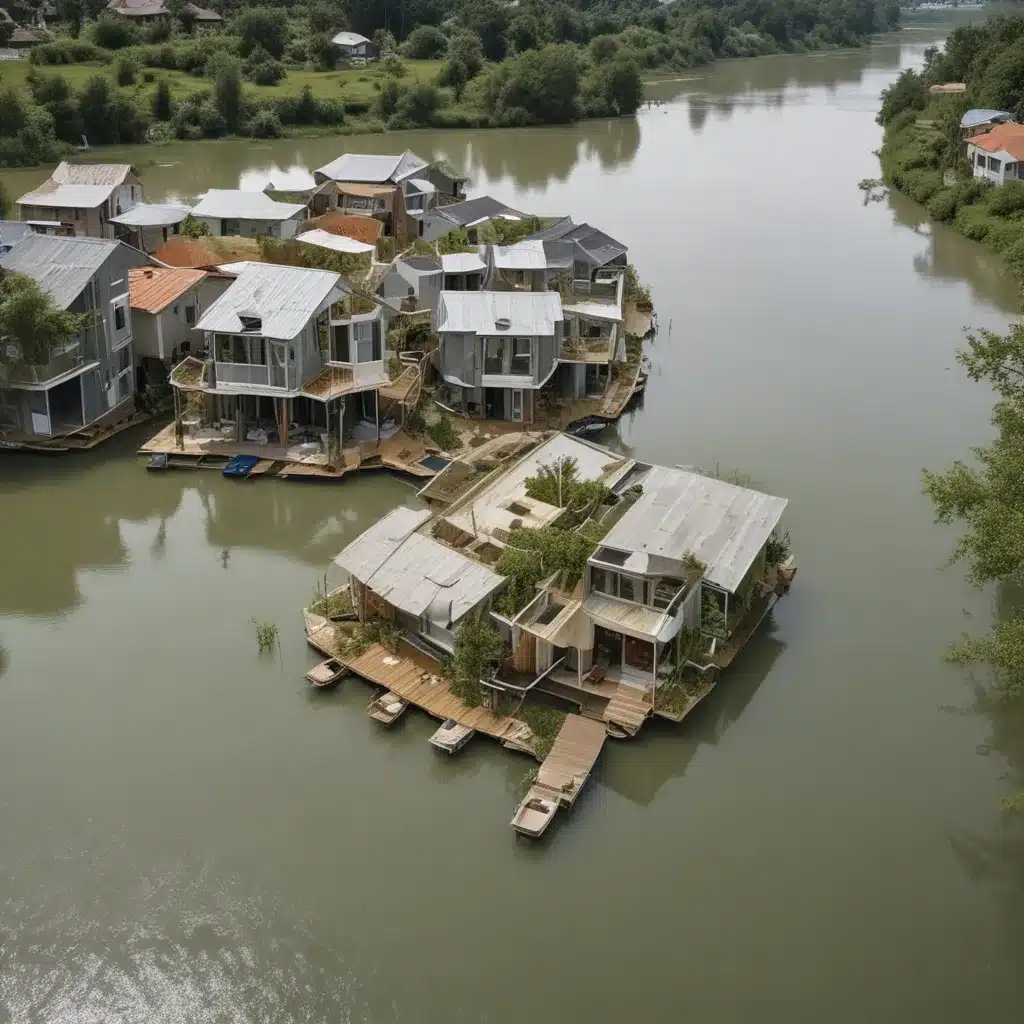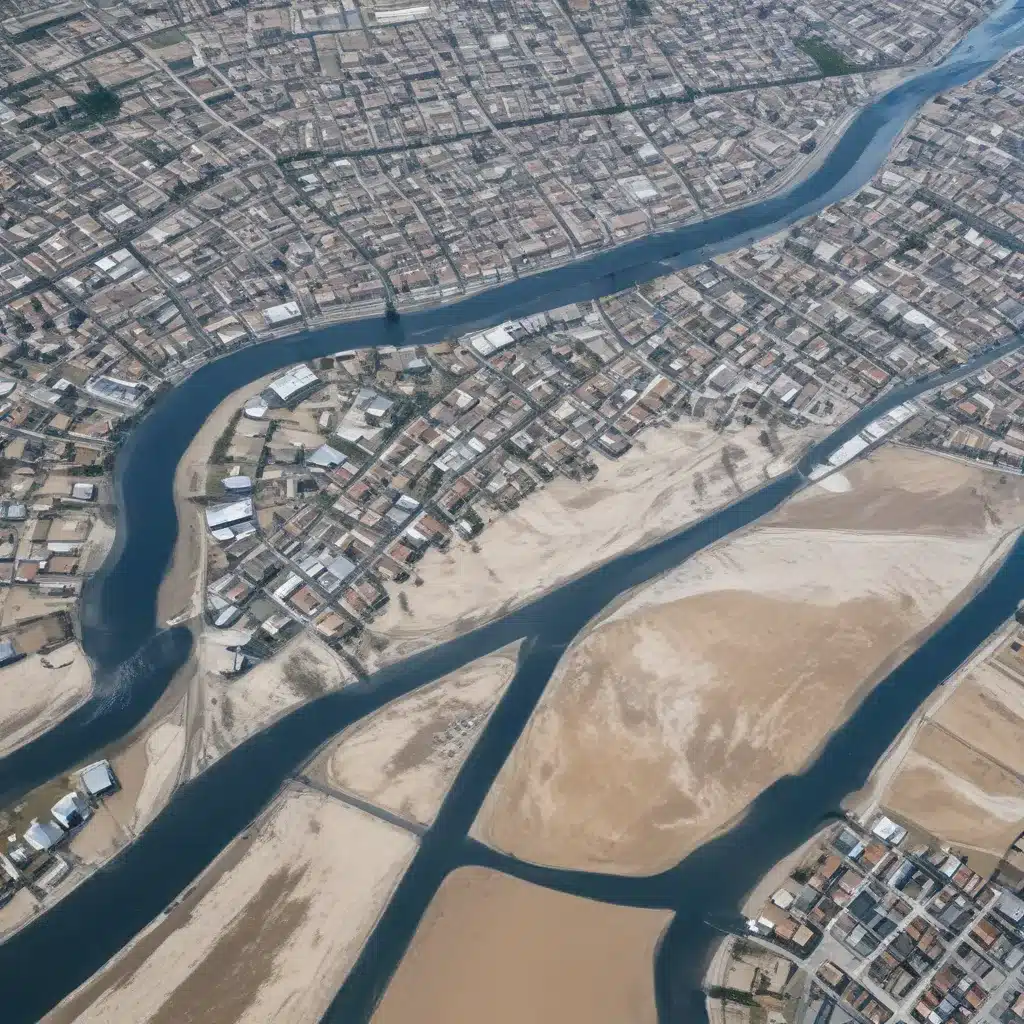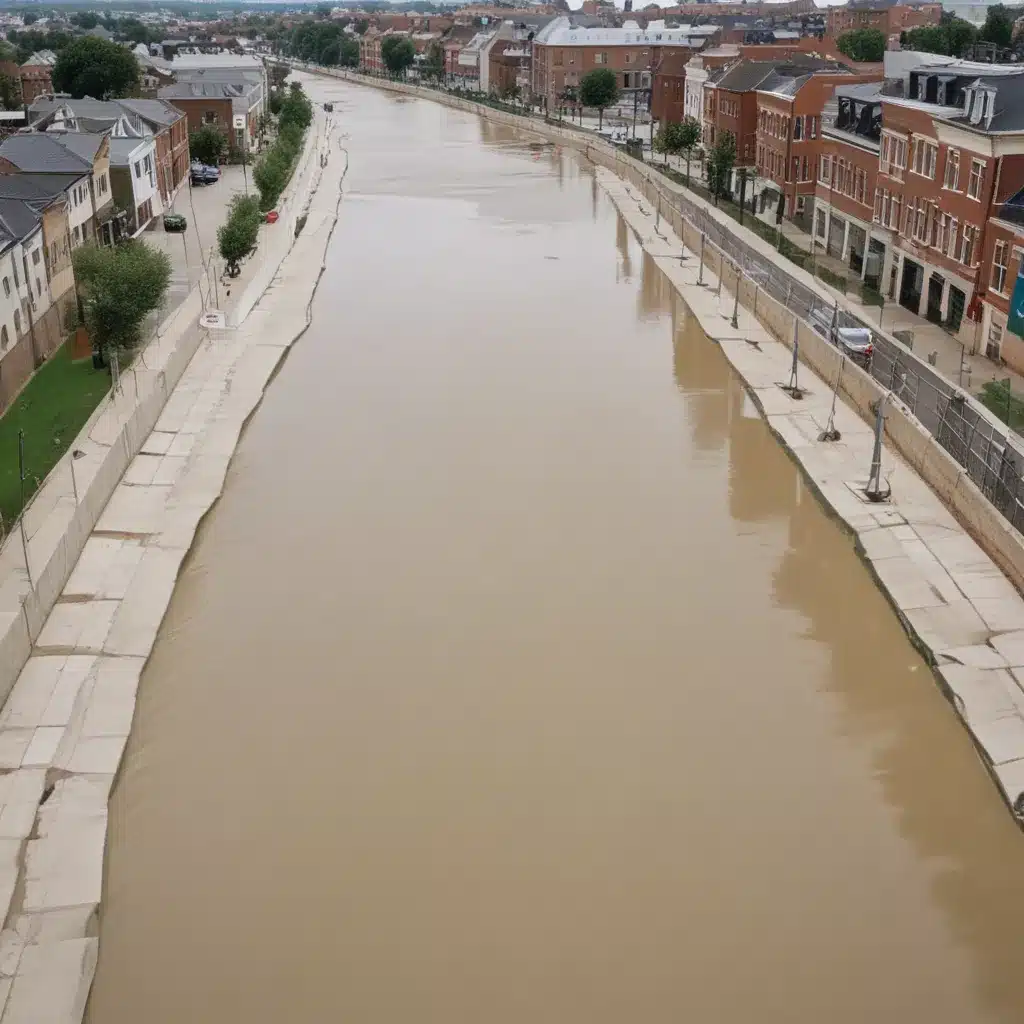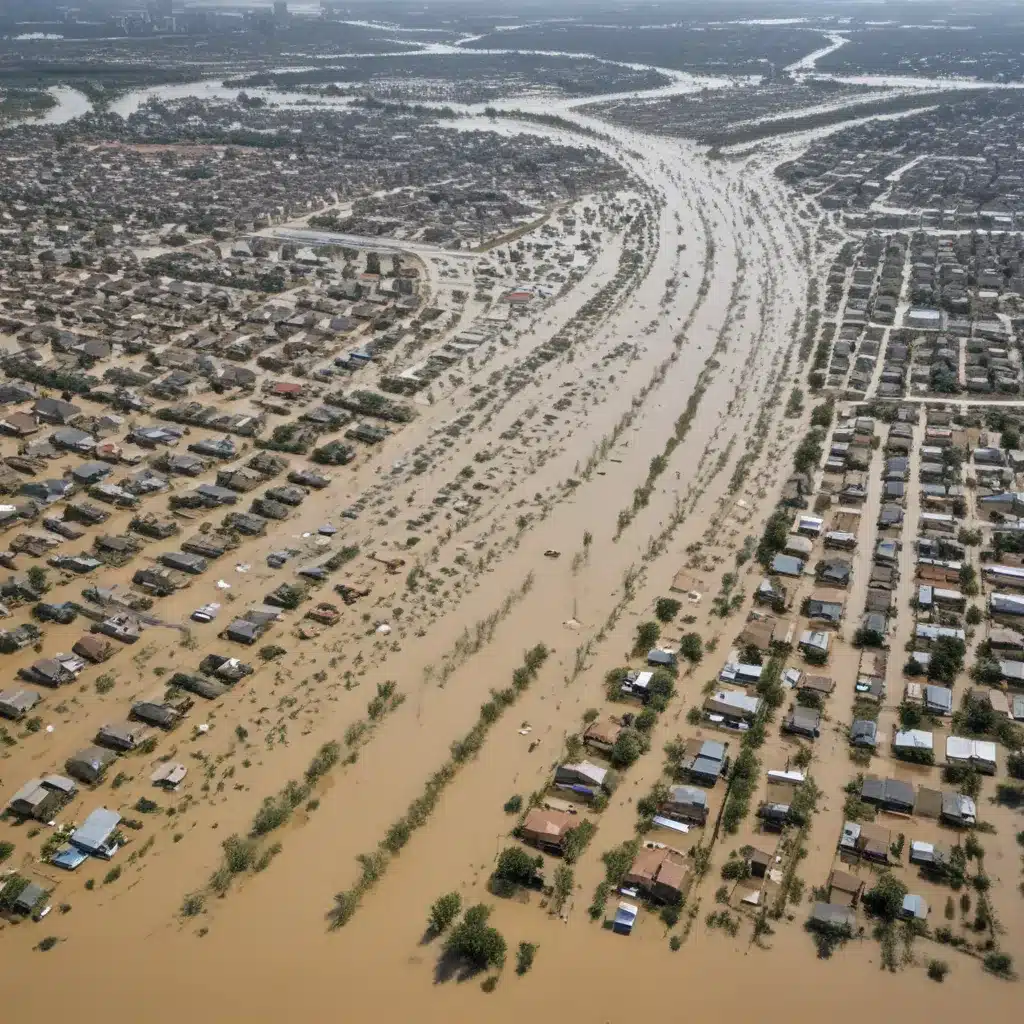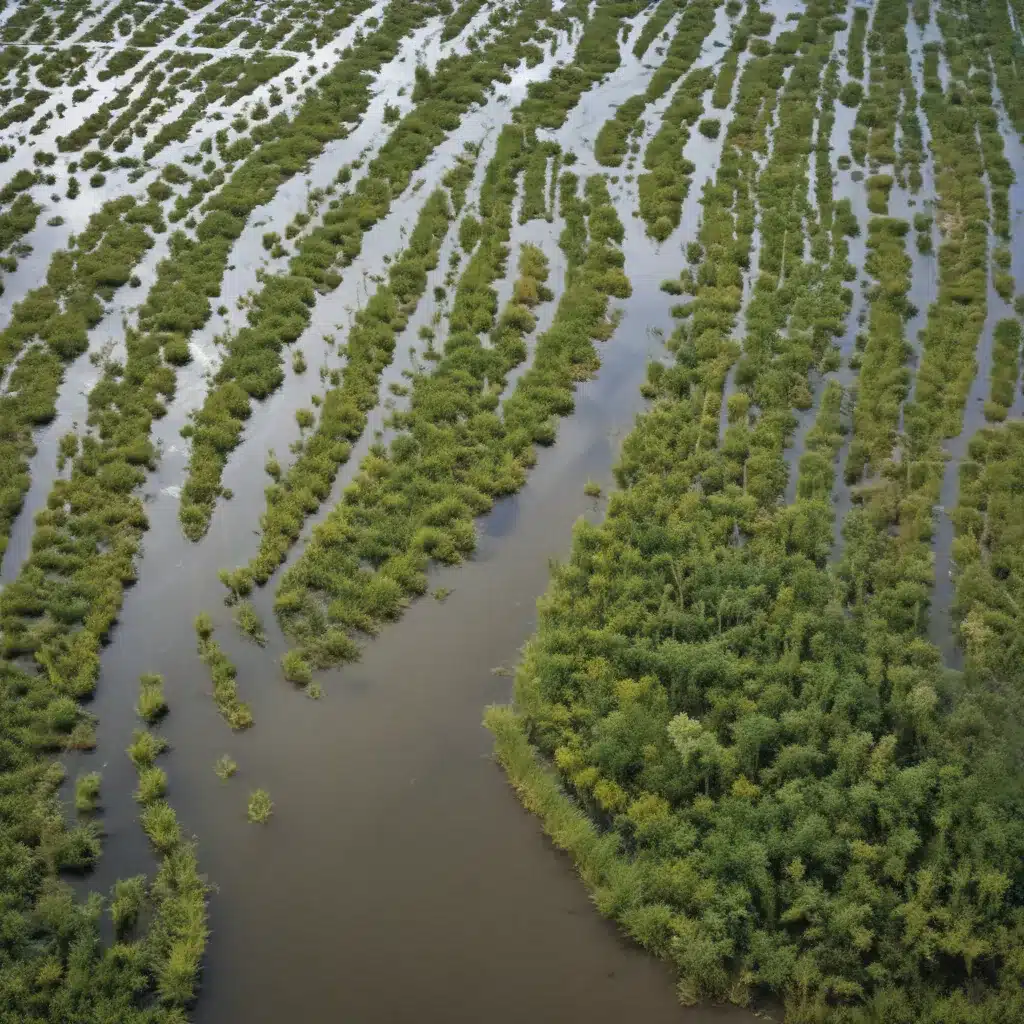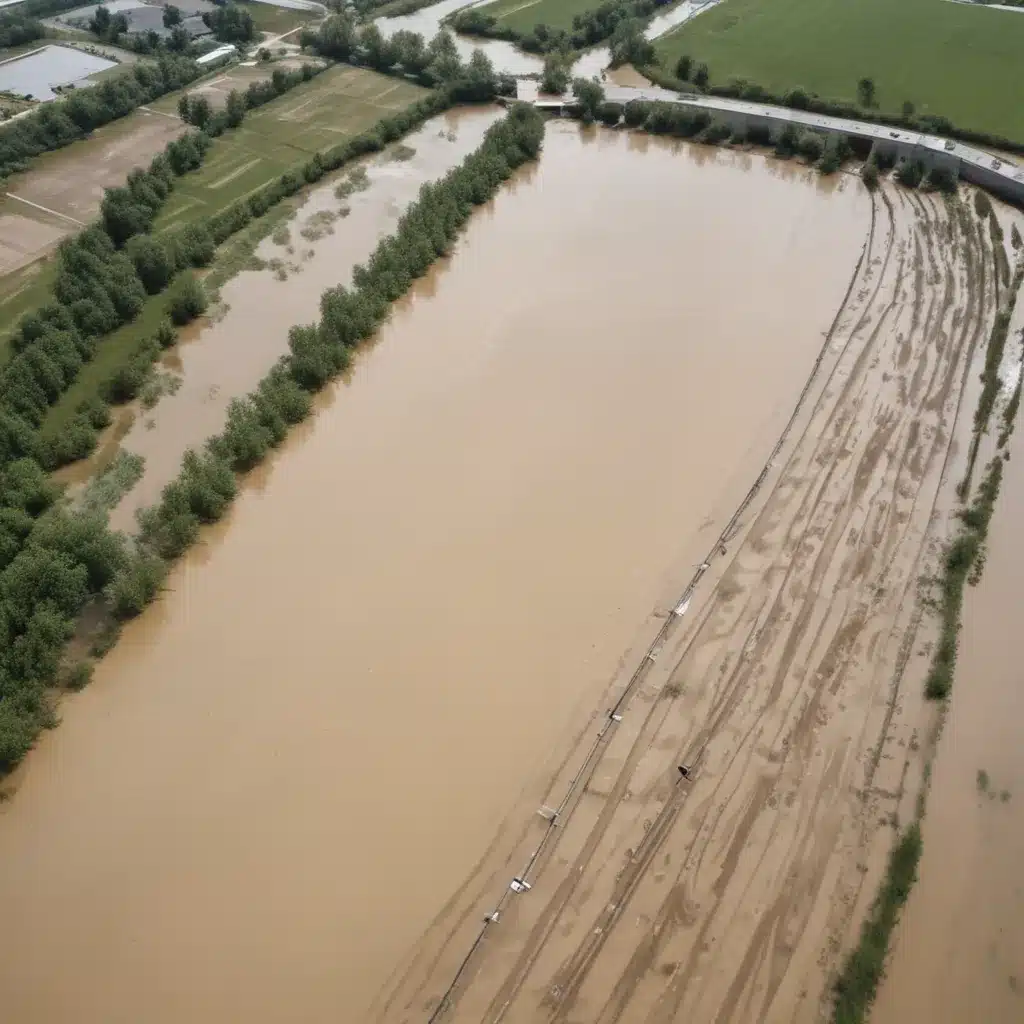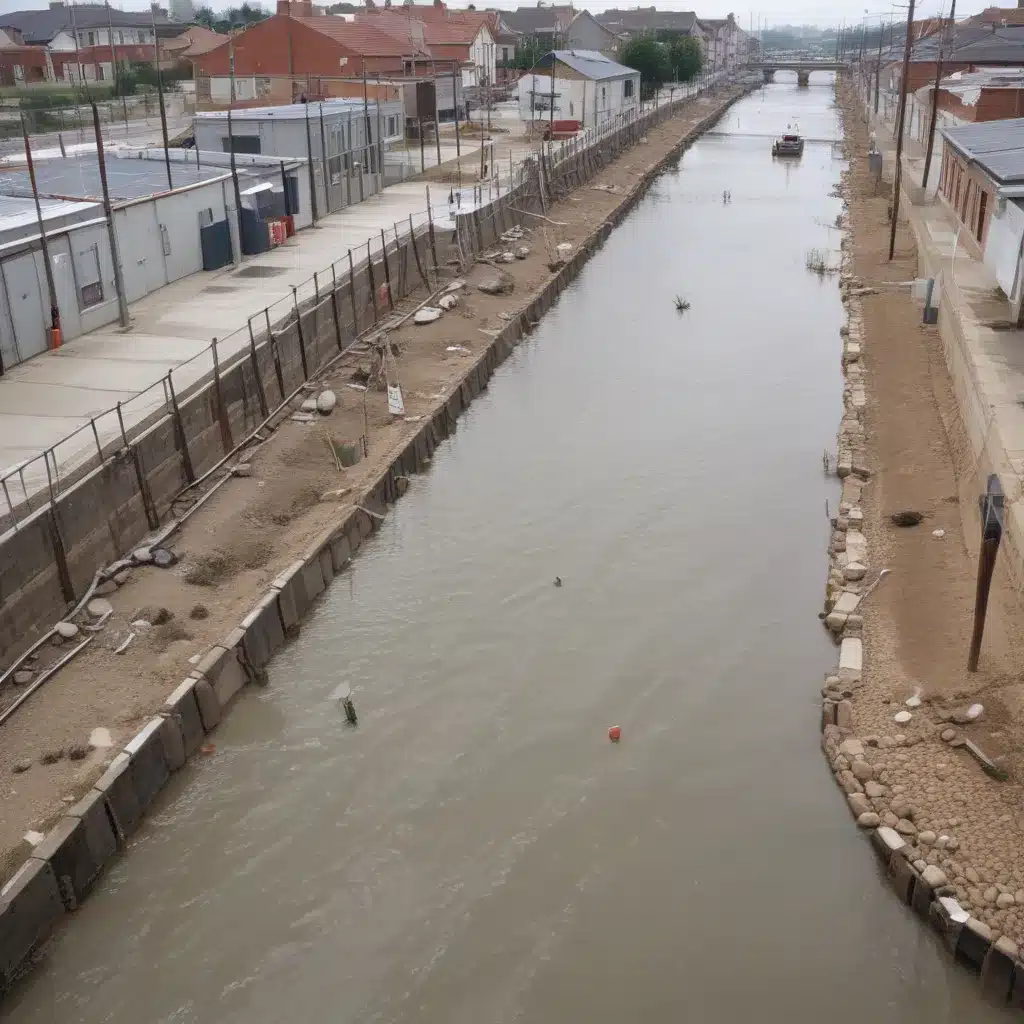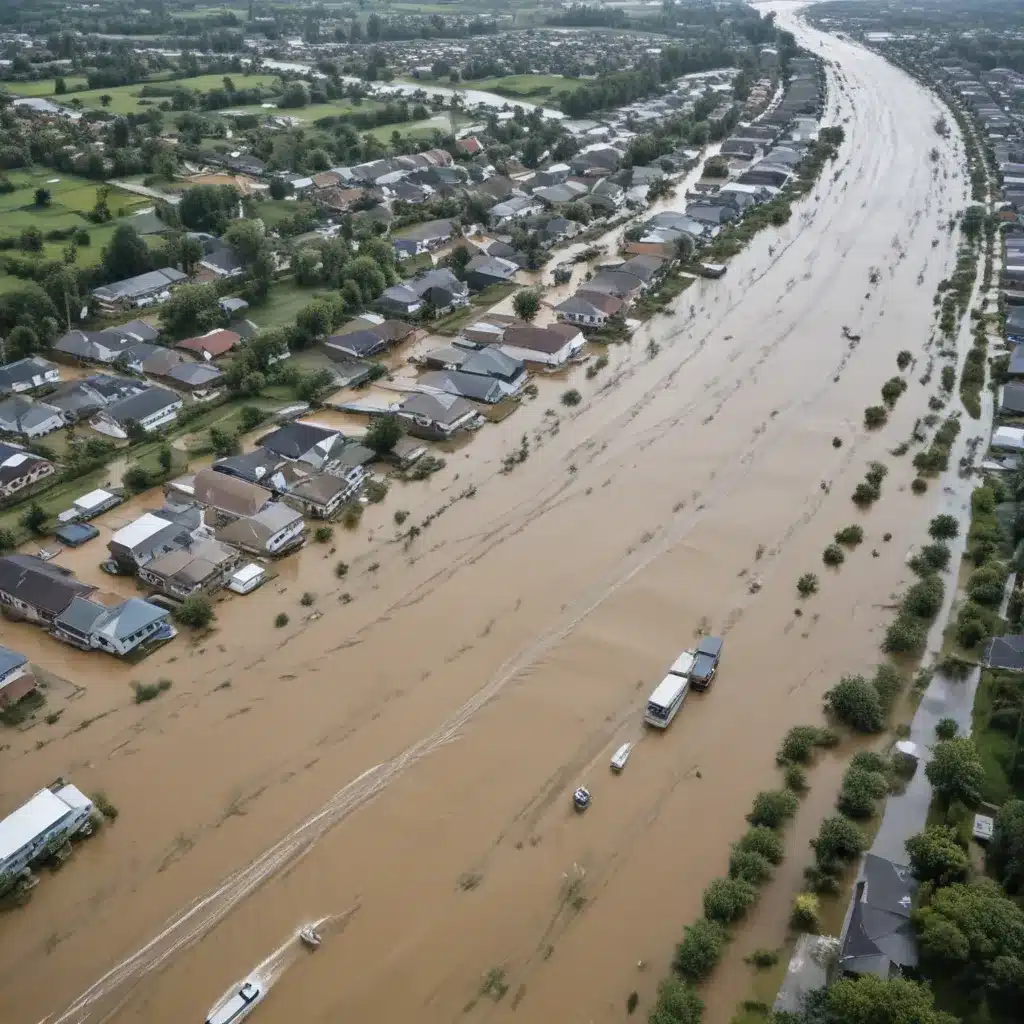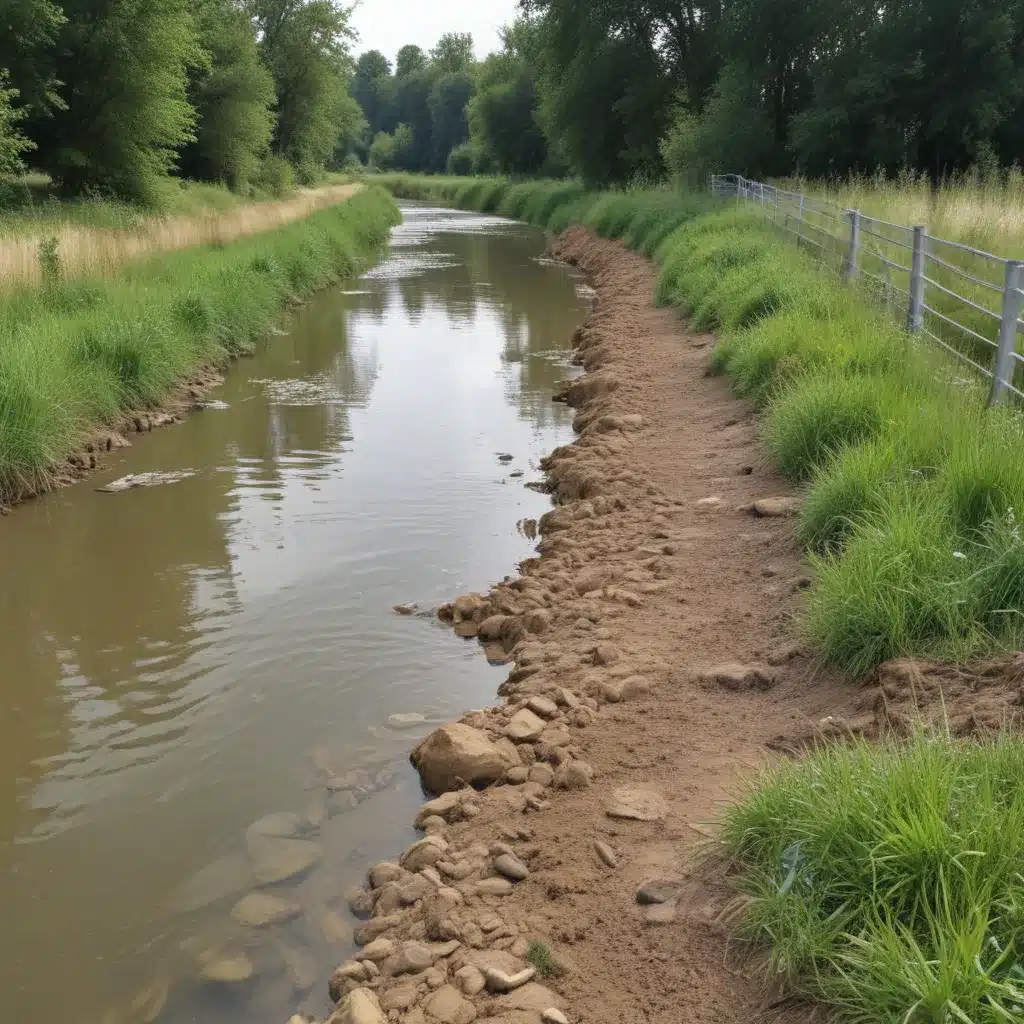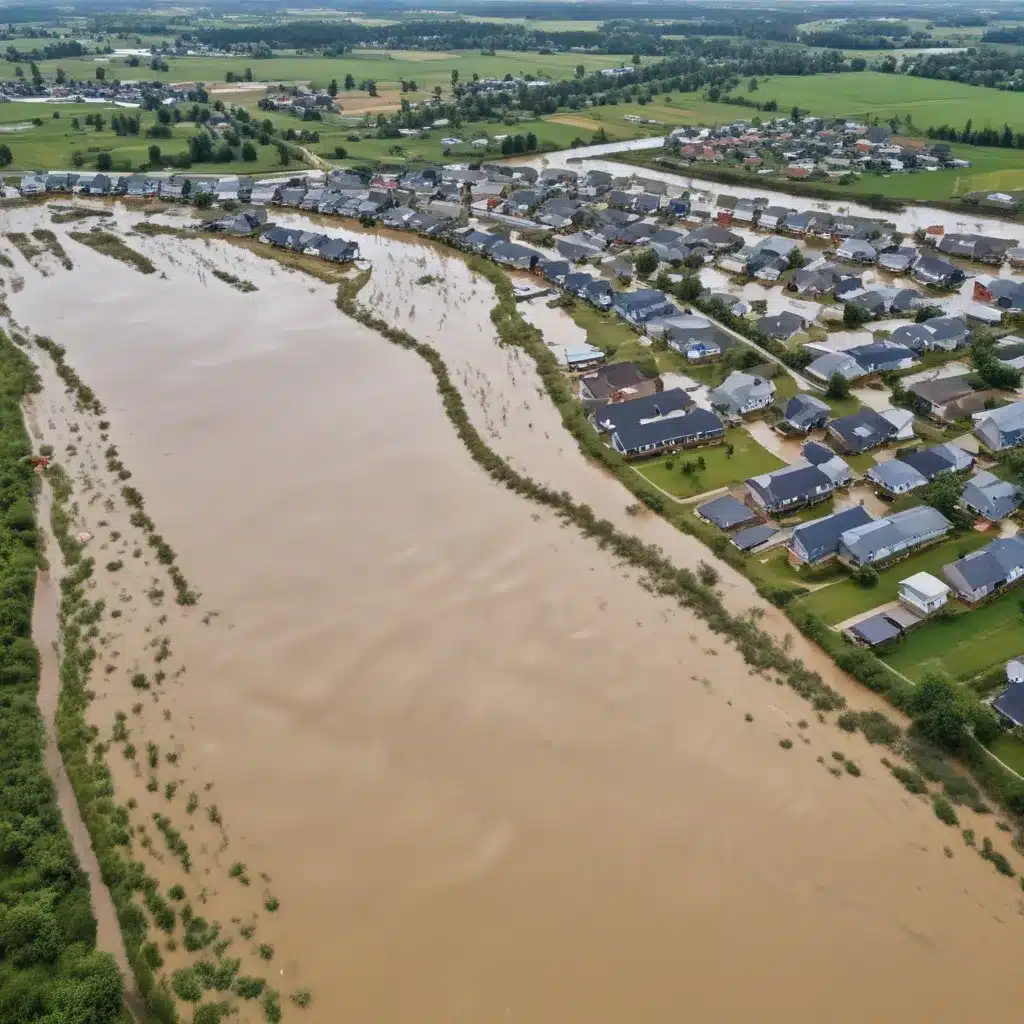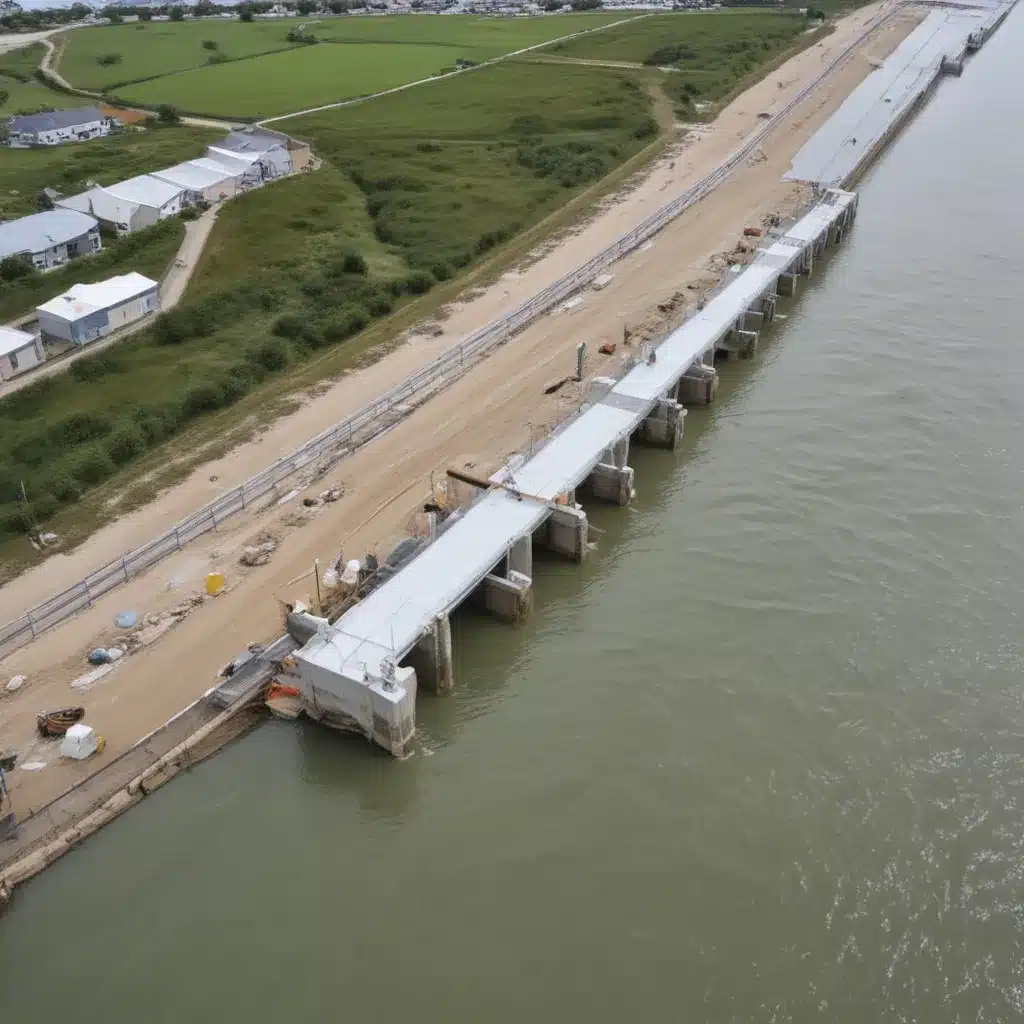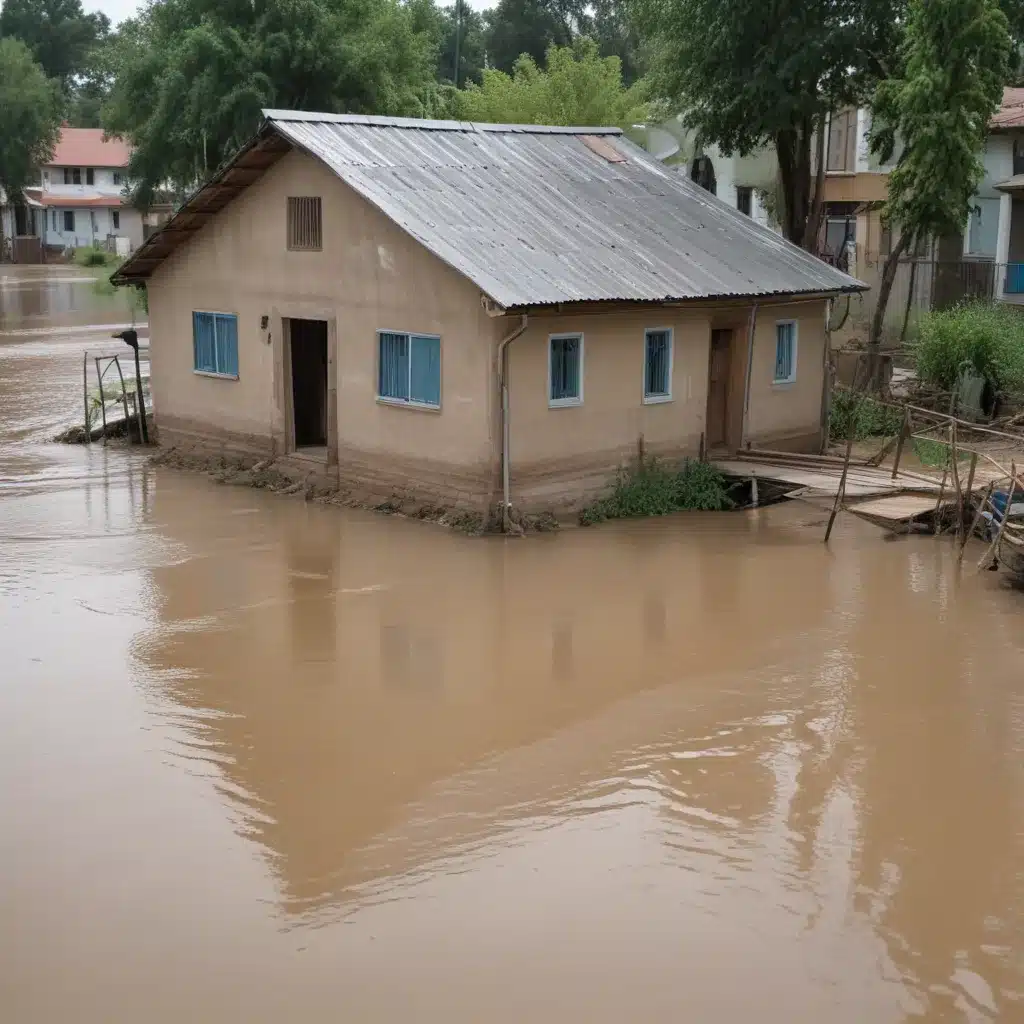Like a compass guiding sailors through treacherous waters, artificial intelligence (AI) and big data have emerged as powerful tools in predicting flood risks. In an era where climate change is intensifying extreme weather events, the need for accurate and timely flood forecasting has never been more critical. But how exactly do AI and big data contribute to this task? How can they help us anticipate and mitigate the devastating impact of floods? In this discussion, we will explore the pivotal role played by AI and big data in predicting flood risks, uncovering their potential for revolutionizing flood risk assessment and management.
Key Takeaways
- Advanced data collection techniques such as remote sensing and UAVs are used to gather high-resolution data in real-time.
- Flood risk modeling utilizes sophisticated algorithms and AI-powered analytics.
- AI processes vast amounts of data in real-time, providing accurate predictions.
- Machine learning algorithms improve over time as more data is collected and analyzed.
Understanding Flood Risk Assessment
Understanding flood risk assessment is essential for effective preparation and response to potential flooding events. In order to accurately predict and mitigate flood risks, it is vital to employ advanced data collection techniques and flood risk modeling.
Innovative data collection techniques play a crucial role in flood risk assessment. Traditional methods, such as manual surveys and satellite imagery, are limited in their scope and may not capture the dynamic nature of flood events. However, with the advent of new technologies, such as remote sensing and unmanned aerial vehicles (UAVs), we can now collect vast amounts of high-resolution data in real-time. This data includes information about topography, land use, and hydrological conditions, which are vital for accurate flood risk assessment.
Flood risk modeling is another key component of understanding flood risk assessment. By using sophisticated algorithms and AI-powered analytics, we can simulate various flood scenarios and predict their potential impacts. These models take into account factors such as rainfall patterns, river flow rates, and urban infrastructure, allowing us to identify high-risk areas and develop effective mitigation strategies. Furthermore, by integrating real-time data into these models, we can continuously update and refine our predictions, ensuring that our flood risk assessments remain accurate and up-to-date.
The Power of Artificial Intelligence
Artificial Intelligence harnesses the power of advanced algorithms and analytics to revolutionize flood risk assessment. By employing powerful algorithms and data analysis techniques, AI can process vast amounts of data in real time, providing accurate and timely predictions of flood risks. This enables individuals, communities, and organizations to make informed decisions and take proactive measures to mitigate the impact of floods.
One of the key strengths of AI lies in its ability to analyze complex data sets and identify patterns that may not be easily discernible to humans. This allows AI systems to uncover hidden correlations and trends, leading to more accurate flood risk assessments. By leveraging the power of AI, we can gain valuable insights into the factors that contribute to flood risks, such as rainfall patterns, topography, and infrastructure vulnerabilities.
To illustrate the capabilities of AI in flood risk assessment, let’s consider a hypothetical scenario. Imagine a city prone to flooding due to a combination of heavy rainfall and inadequate drainage systems. By feeding historical weather data, topographic maps, and infrastructure information into an AI system, we can build a model that accurately predicts the areas most susceptible to flooding during different weather conditions. This information can then be used by city planners to prioritize infrastructure improvements, implement better drainage systems, and develop evacuation plans for residents in high-risk areas.
The following table summarizes the benefits of using AI in flood risk assessment:
| Benefits of AI in Flood Risk Assessment |
|---|
| More accurate predictions |
| Faster processing of large data sets |
| Identification of hidden correlations |
Leveraging Big Data for Accurate Predictions
By harnessing the vast amounts of data available, accurate predictions can be made through the utilization of big data. In today’s digital age, we are generating an unprecedented amount of data every second. From social media posts to satellite imagery, the sheer volume of data presents both a challenge and an opportunity. With the right data analysis techniques and machine learning algorithms, we can unlock valuable insights and make accurate predictions about flood risks.
Data analysis techniques play a crucial role in extracting meaningful information from big data. Traditional statistical methods are often insufficient to handle the sheer volume, variety, and velocity of data. That’s where machine learning algorithms come into play. These algorithms can automatically learn patterns and relationships within the data, allowing us to make accurate predictions.
The power of machine learning lies in its ability to adapt and improve over time. As more data is collected and analyzed, the algorithms can refine their predictions and become even more accurate. This iterative process ensures that our flood risk predictions are constantly improving, providing invaluable insights for disaster management and prevention.
Furthermore, the utilization of big data enables us to consider a wide range of variables that can impact flood risks. From rainfall patterns to soil moisture levels, we can incorporate multiple data sources to create a holistic view of the situation. This comprehensive approach enhances the accuracy and reliability of our predictions, enabling us to take proactive measures to mitigate the impact of floods.
Combining AI and Big Data for Enhanced Flood Forecasting
To enhance flood forecasting, the combination of AI and big data offers powerful capabilities for accurate and timely predictions. By combining the vast amounts of data available with advanced algorithms, machine learning techniques can be applied to improve flood forecasting and risk assessment. This integration of AI and big data enables us to better understand the complex dynamics of floods and make more informed decisions in mitigating their impact.
One way to utilize machine learning in flood risk assessment is through the analysis of historical data. By feeding large amounts of historical flood data into AI algorithms, patterns and trends can be identified, allowing for the development of predictive models. These models can then be used to forecast flood events and estimate potential damages with higher accuracy.
Another application is the real-time monitoring of weather conditions and water levels. By continuously collecting and analyzing data from various sensors and satellite imagery, AI algorithms can quickly detect changes in weather patterns and water levels that may lead to flooding. This information can then be used to issue timely warnings and evacuation orders, ultimately saving lives and minimizing property damage.
Incorporating AI and big data into flood forecasting also allows for the integration of multiple data sources. By combining data from weather stations, river gauges, social media, and other sources, a more comprehensive view of flood risks can be obtained. This holistic approach enables us to identify potential vulnerabilities and develop targeted strategies for flood prevention and response.
The table below summarizes the benefits of combining AI and big data for improved flood forecasting:
| Benefits of Combining AI and Big Data in Flood Forecasting |
|---|
| Accurate and timely predictions |
| Improved understanding of flood dynamics |
| Enhanced risk assessment and damage estimation |
| Real-time monitoring and early warning systems |
Real-Time Monitoring for Early Warning Systems
Real-time monitoring plays a crucial role in early warning systems for predicting flood risks. By utilizing AI and big data, we can gather and analyze real-time data to make accurate flood predictions and assess risks in a timely manner. This data-driven approach enables us to take proactive measures to mitigate potential damages and protect lives and property.
Data-Driven Flood Prediction
Using AI and big data, we can accurately predict flood risks through real-time monitoring for early warning systems. This data-driven flood prediction approach utilizes predictive analytics for flood prevention and ensures timely action to mitigate potential damages. Here are three ways in which this technology is revolutionizing flood prediction:
- Advanced Sensors: Deploying state-of-the-art sensors across flood-prone areas allows us to collect real-time data on water levels, rainfall, and river flow rates. These sensors provide a continuous stream of information, enabling us to monitor and analyze flood risks accurately.
- Machine Learning Algorithms: By employing powerful machine learning algorithms, we can analyze vast amounts of historical and real-time data to identify patterns and trends. This enables us to make accurate predictions about flood risks and anticipate potential threats beforehand.
- Intelligent Decision-Making: Armed with real-time data and predictive analytics, decision-makers can take proactive measures to mitigate flood risks. This includes issuing timely warnings, implementing evacuation plans, and allocating resources effectively to minimize damages and protect lives.
Timely Risk Assessment
Our ability to accurately assess flood risks on time is enhanced through the implementation of real-time monitoring systems. Real-time monitoring allows us to continuously collect data on weather conditions, water levels, and other relevant factors, enabling us to detect any potential flood risks as they emerge. By leveraging advanced technologies such as AI and big data analytics, we can process and analyze this data in real-time, providing us with valuable insights and predictions. This timely risk assessment empowers us to take proactive measures, such as issuing early warnings and implementing evacuation plans, to mitigate the impact of floods. Furthermore, effective risk communication plays a crucial role in ensuring that the information reaches the right audience promptly and enables them to make informed decisions. Through the integration of real-time monitoring and risk communication, we can enhance our capacity to respond swiftly and effectively to flood risks, ultimately saving lives and minimizing damages.
Mapping Flood-Prone Areas Using Data Analysis
By analyzing large datasets and utilizing artificial intelligence, flood-prone areas can be accurately mapped. Through data-driven analysis and predictive modeling, we can gain valuable insights into the geographical locations most susceptible to flooding. Here’s how:
- Data Gathering: Our first step is to collect comprehensive datasets that encompass various factors contributing to flooding, such as historical flood data, rainfall patterns, topography, and soil composition. This vast amount of data provides us with a solid foundation for analysis.
- Machine Learning Algorithms: We employ advanced AI algorithms to analyze the collected data and identify meaningful patterns and correlations. These algorithms can automatically learn from the data, enabling us to build accurate predictive models for flood-prone areas.
- Spatial Visualization: With the help of geographic information systems (GIS), we visualize the analyzed data on maps, allowing us to identify areas at high risk of flooding. By overlaying different datasets and applying sophisticated spatial analysis techniques, we can create detailed flood risk maps that highlight vulnerable regions.
Through this innovative approach, we can effectively map flood-prone areas and provide actionable insights to stakeholders, such as urban planners, emergency management agencies, and insurance companies. These maps can guide decision-making processes, aid in urban development planning, and help allocate resources more efficiently.
Predicting Flood Severity and Duration
After accurately mapping flood-prone areas, the next step is to predict the severity and duration of potential floods. This is where the power of AI and big data comes into play. By analyzing vast amounts of historical flood data, combined with real-time weather information, we can improve flood forecasting accuracy and better predict the impact of floods.
AI algorithms can analyze data from various sources, such as satellite imagery, river gauge readings, and weather forecasts, to identify patterns and trends that can help predict flood severity. These algorithms can learn from historical data to understand the relationship between different variables, such as rainfall, river levels, and flood impacts. By continuously updating and refining these models with new data, we can improve the accuracy of our flood predictions.
In addition to predicting flood severity, AI and big data can also help us estimate the duration of potential floods. By analyzing historical flood data, we can identify patterns in the duration of past floods and use this information to make predictions about future events. This can help emergency management agencies and communities prepare for the potential impact of a flood, allowing them to allocate resources and plan evacuation strategies more effectively.
Improving Flood Risk Communication
Improving communication of flood risks is crucial for ensuring the safety and preparedness of communities. In order to effectively improve risk communication and enhance community engagement, we can employ innovative strategies that leverage AI and big data. Here are three ways we can achieve this:
- Real-time alerts: By utilizing AI and big data, we can develop sophisticated systems that provide real-time alerts and updates regarding flood risks. These systems can analyze data from various sources, such as weather forecasts, river levels, and historical flood patterns, to generate accurate and timely warnings. These alerts can be delivered through multiple channels, including mobile apps, text messages, and social media platforms, ensuring that the community receives the information they need to take appropriate action.
- Interactive mapping: Interactive maps powered by AI and big data can play a crucial role in improving flood risk communication. These maps can display flood-prone areas, evacuation routes, and emergency shelters, providing the community with a visual representation of the potential risks and the necessary steps to mitigate them. By allowing users to interact with the map and access relevant information, such as flood depth and severity, these tools empower individuals to make informed decisions and take proactive measures to protect themselves and their properties.
- Community engagement platforms: Creating online platforms that facilitate community engagement can significantly enhance flood risk communication. These platforms can serve as a space for residents, local authorities, and experts to share information, exchange ideas, and collaborate on flood preparedness initiatives. By fostering a sense of community ownership and involvement, these platforms can strengthen the effectiveness of risk communication efforts and enable the implementation of innovative solutions.
Incorporating AI and big data into flood risk communication is a transformative approach that holds great potential for improving community safety and preparedness. By embracing these technologies and implementing innovative strategies, we can enhance the way we communicate flood risks, ultimately saving lives and minimizing the devastating impacts of floods.
Enhancing Emergency Response With AI and Big Data
Utilizing AI and big data can revolutionize emergency response by providing real-time insights and actionable information. In the face of disasters, such as floods, enhancing disaster response is crucial to saving lives and minimizing damage. AI and big data can play a pivotal role in achieving this goal.
One way AI and big data can enhance emergency response is by optimizing resource allocation. During a flood, it is essential to allocate resources effectively to areas that are most in need. AI algorithms can analyze data from various sources, such as social media, weather sensors, and emergency calls, to identify areas at high risk and prioritize response efforts accordingly. By harnessing the power of big data, emergency responders can make informed decisions about the deployment of personnel, equipment, and supplies, maximizing their impact and saving valuable time.
Furthermore, AI can assist in real-time monitoring and early warning systems. By analyzing data from sensors, satellites, and weather forecasts, AI algorithms can detect patterns and anomalies that indicate an impending flood. This enables emergency responders to issue timely warnings to residents in affected areas, allowing them to evacuate or take necessary precautions. With AI’s ability to process vast amounts of data quickly, these warnings can be disseminated in real-time, helping to save lives and reduce the impact of the disaster.
The Role of Predictive Analytics in Flood Prevention
Predictive analytics plays a vital role in flood prevention by providing valuable insights and proactive measures to mitigate risks. With the help of predictive modeling and machine learning algorithms, we can now anticipate and prevent potential flooding disasters more effectively than ever before.
Here are three ways in which predictive analytics contributes to flood prevention:
- Early Warning Systems: Predictive modeling allows us to analyze historical flood data, weather patterns, and other relevant factors to identify potential flood-prone areas. By using machine learning algorithms, we can develop accurate and timely early warning systems that can alert authorities and communities about impending floods. This enables proactive evacuation measures and the deployment of resources to minimize the impact of flooding.
- Infrastructure Planning: Predictive analytics helps in designing and upgrading infrastructure to withstand potential flood risks. By analyzing flood patterns and historical data, we can identify areas that are prone to flooding and incorporate preventive measures into the construction of buildings, roads, and drainage systems. This ensures that infrastructure is resilient and can effectively handle floods, reducing damage and the need for costly repairs.
- Risk Assessment and Insurance: Predictive modeling allows insurers to assess flood risks accurately and offer appropriate coverage to individuals and businesses. By analyzing historical flood data and other relevant factors, machine learning algorithms can predict the likelihood and severity of future floods. This enables insurers to offer tailored insurance policies that reflect the actual flood risks, ensuring fair premiums and coverage.
Reducing Flood Damage Through Proactive Measures
As we explore ways to reduce flood damage through proactive measures, three key points come to mind: early warning systems, risk assessment techniques, and infrastructure improvement strategies. By implementing robust early warning systems, we can provide timely alerts to communities at risk, allowing them to take necessary precautions and evacuate if needed. Additionally, utilizing sophisticated risk assessment techniques will enable us to identify vulnerable areas and prioritize resources for flood prevention efforts. Lastly, investing in infrastructure improvements, such as building stronger levees and flood barriers, can help mitigate the impact of floods and protect lives and property.
Early Warning Systems
We can significantly reduce flood damage by implementing proactive measures such as early warning systems. These systems utilize real-time monitoring and data-driven flood prediction to provide timely alerts and enable residents and authorities to take necessary precautions. Here are three ways early warning systems can help mitigate flood damage:
- Continuous monitoring of water levels and weather conditions allows for the early detection of potential flood events.
- Integration of sensor networks and satellite data enables the collection and analysis of vast amounts of data, improving the accuracy of flood predictions.
- Automated alert systems can instantly notify residents, emergency services, and local authorities, allowing for timely evacuation and disaster response.
Risk Assessment Techniques
Implementing proactive risk assessment techniques is crucial in reducing flood damage and improving disaster preparedness. To effectively mitigate the impact of floods, it is essential to have a deep understanding of flood forecasting and employ proactive measures. By utilizing advanced AI and big data analytics, we can enhance our ability to identify high-risk areas and predict flood events with greater accuracy. These technologies enable us to analyze vast amounts of data, including historical flood data, weather patterns, and terrain information, to identify potential flood risks and vulnerabilities. With this knowledge, we can develop targeted strategies to minimize the impact of floods, such as constructing flood-resistant infrastructure, implementing early warning systems, and establishing emergency response plans. By adopting these proactive risk assessment techniques, we can take decisive action to protect lives, property, and the environment from the devastating effects of floods.
Infrastructure Improvement Strategies
To effectively reduce flood damage and improve disaster preparedness, one key approach is to focus on infrastructure improvement strategies. By enhancing the resilience of our infrastructure, we can better withstand the impact of flooding events and minimize the damage caused. Here are three innovative strategies that can help us achieve this goal:
- Green infrastructure: Implementing nature-based solutions such as rain gardens, green roofs, and permeable pavements can absorb and store excess water, reducing the risk of flooding.
- Smart sensors and monitoring systems: Incorporating advanced technologies into our infrastructure, such as real-time sensors and predictive analytics, enables us to gather valuable data and respond promptly to changing flood conditions.
- Community engagement and education: Involving the community in flood risk management initiatives fosters a sense of ownership and responsibility. By educating residents about flood risks and promoting proactive measures like flood-resistant building materials and elevated design, we empower individuals to take action and protect their properties.
Integrating Weather Data for Comprehensive Risk Assessment
By incorporating weather data, a comprehensive risk assessment can be achieved when predicting flood risks using AI and Big Data. Integrating climate data into predictive modeling allows for a more accurate and detailed understanding of the factors that contribute to flood risks. This integration enables us to identify patterns and trends in weather conditions that can influence the likelihood and severity of flooding events.
With the advancement of AI and Big Data technologies, we now can collect and analyze vast amounts of weather data in real-time. This includes information such as temperature, rainfall, wind speed, and humidity. By harnessing this data, predictive models can be developed to forecast future weather conditions with a high degree of accuracy. These models can then be used to assess the potential impact of these weather conditions on flood risks.
Integrating weather data into risk assessment allows for a more comprehensive understanding of the complex dynamics involved in flood events. It enables us to identify not only the likelihood of flooding but also the potential magnitude and duration of the event. This information is crucial for decision-makers in developing effective flood mitigation strategies and emergency response plans.
Moreover, the integration of weather data with AI and Big Data technologies allows for real-time monitoring and early warning systems. By continuously analyzing weather patterns and comparing them to historical data, these systems can provide timely alerts and notifications to communities at risk. This empowers individuals and authorities to take proactive measures to protect lives and minimize property damage.
Overcoming Challenges in Implementing AI and Big Data Solutions
With the integration of weather data into risk assessment, we can now address the challenges associated with implementing AI and Big Data solutions for predicting flood risks. Overcoming these challenges is crucial to unlocking the full potential of these technologies and revolutionizing flood risk management. Here are some key challenges we face in AI implementation and how we can overcome them:
- Data quality and accessibility: Obtaining high-quality and relevant data is essential for accurate flood risk prediction. However, data can be scattered across different sources and formats, making it difficult to access and integrate. To overcome this challenge, we need to establish standardized data formats and improve data sharing among stakeholders. This will enable us to harness a wide range of data sources and ensure their accuracy and accessibility.
- Data volume and processing: Big Data solutions require massive amounts of data for analysis, which can pose challenges in terms of storage and processing power. To overcome this obstacle, we need to invest in scalable infrastructure and advanced computing technologies. Cloud computing and distributed processing frameworks can help us handle large volumes of data and accelerate processing speed, enabling real-time flood risk predictions.
- Algorithm complexity and interpretability: AI algorithms can be complex and difficult to interpret, making it challenging to understand and trust their predictions. Overcoming this challenge requires us to develop explainable AI models and establish transparent decision-making processes. By incorporating human expertise and domain knowledge into the algorithm development process, we can create AI models that not only provide accurate predictions but also offer insights and explanations behind their decisions.
Ethical Considerations in Using AI for Flood Prediction
When using AI for flood prediction, there are important ethical considerations to take into account. One such consideration is privacy concerns, as the data collected for flood prediction may include sensitive information about individuals and their properties. Additionally, bias in flood prediction algorithms is another ethical concern, as it could disproportionately affect certain communities or regions.
Privacy Concerns in AI
Privacy concerns are a critical aspect to consider when utilizing AI for flood prediction, as ethical considerations must be addressed. As we delve into the world of big data and AI algorithms, it’s essential to recognize the potential implications of data privacy. Here are a few key privacy concerns to keep in mind:
- Data Privacy: With the vast amount of data collected for flood prediction, it is crucial to ensure that individuals’ personal information is protected and used responsibly.
- Algorithm Bias: AI algorithms rely on historical data to make predictions, which can introduce biases. It is essential to address and mitigate any biases that may perpetuate inequalities in flood prediction models.
- Transparency: Openness and transparency in AI systems are vital to building trust with stakeholders. Clear explanations of how data is collected, used, and protected can alleviate privacy concerns.
Bias in Flood Prediction
Bias in flood prediction is an ethical consideration that must be addressed when utilizing AI for predicting flood risks. As we rely more on AI and big data for flood prediction, it is crucial to ensure that the algorithms we use do not perpetuate or amplify existing biases. To tackle this issue, it is essential to implement robust bias detection mechanisms that continuously monitor the AI models and data sources. Additionally, rigorous data validation processes should be put in place to ensure that the data used for training the AI models is representative and unbiased. By actively addressing bias in flood prediction, we can enhance the accuracy and fairness of our flood risk assessments, leading to more effective and equitable disaster management strategies.
Future Prospects and Advancements in Flood Risk Prediction
In exploring the prospects and advancements in flood risk prediction, we can confidently say that AI and Big Data hold great promise. The combination of these two technologies has the potential to revolutionize the way we predict and mitigate the risks associated with flooding. Here are some future applications and technological advancements that we envision:
- Enhanced Data Collection: With the help of AI and Big Data, we can collect and analyze vast amounts of data from various sources such as weather sensors, satellite imagery, social media feeds, and historical records. This comprehensive data collection will enable us to have a more accurate understanding of flood patterns and predict future risks more effectively.
- Real-time Monitoring and Alert Systems: AI algorithms can continuously monitor data streams and detect patterns that indicate potential flooding events. This real-time monitoring can help in the early detection of flood risks, allowing authorities to take proactive measures such as issuing timely alerts and evacuations.
- Improved Flood Modeling and Simulation: AI and Big Data can be utilized to develop more sophisticated flood models and simulations. By incorporating high-resolution topographic data, weather patterns, and historical flood data, these models can provide more accurate predictions of flood extent and severity. This information can assist urban planners, emergency responders, and policymakers in making informed decisions regarding flood mitigation strategies.
As we continue to advance in AI and Big Data technologies, the potential for predicting flood risks with greater accuracy and efficiency is immense. These advancements will not only help in minimizing the damage caused by floods but also save lives and resources. The future of flood risk prediction is indeed bright, and we are excited to witness the transformative impact of AI and Big Data in this field.

